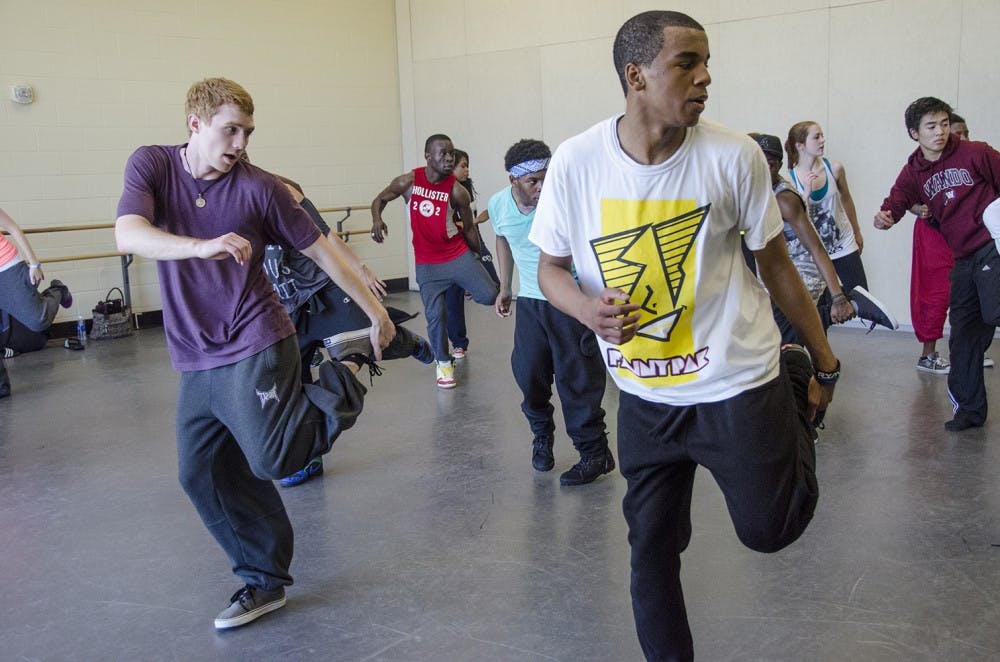All day hip-hop event benefits local food bank, teaches choreography
Students gathered together at the USC Dance building Saturday to celebrate hip-hop and support a canned food drive at the fourth annual Hip Hop for Life. The dance workshop was hosted by the National Dance Education Organization (NDEO) student chapter at USC.
“The goal of the workshop is to provide a free community dance experience in hip-hop,” said Alyson Amato, a fourth-year dance education student and president of NDEO at USC.
More than 120 participants, aged 8 and up, took part in the event, which was funded by Student Government and USC’s Department of Theatre and Dance.
During the event, attendees were encouraged to partake in three technique classes, a graffiti class and a hip-hop choreography class. The dance classes were led by guest instructors with professional dancing experience from Charleston, S.C., and Arizona. To facilitate the variety in skill and ability, classes were divided into different levels ranging from elementary to collegiate and beyond.
In partnership with “Let’s Move!” — a program developed by U.S. first lady Michelle Obama to combat childhood obesity — the event provided a greater theme of healthy eating and physical lifestyle. Participants had the option to buy lunch at the event that followed guidelines set by Let’s Move.
In addition to dancing, participants were encouraged to bring canned food for donation to Harvest Hope, a food bank that serves roughly 20 counties in South Carolina.
“It is in our nature to want to be a part of something bigger than ourselves, and this day allows all participants to be a part of something much larger than who they are,” Amato said.
Last year the event donated more than 2,000 pounds of canned food to Harvest Hope as well as $200 for a nonprofit organization, according to a letter to the dance instructors. This year’s donation results were not available at the time of publication.
Haley Culbreth, a first-year dance education student, said the workshop was a “great success.”
“Seeing the joy on the kids’ faces during class was … very rewarding,” Culbreth said. “What made it all worthwhile was at the end of the day, a young boy who participated in the workshop said he was going to come ‘next year, and the year after that, and the year after that.’”

